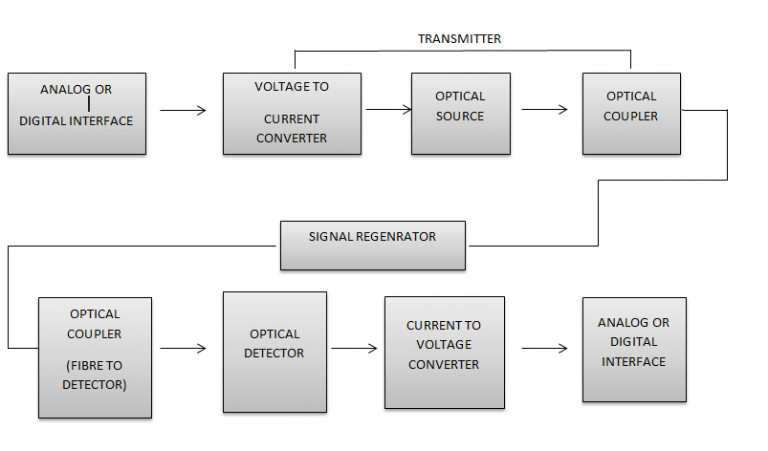Parenting(Age 5 to 8) | Academic | General | Parenting(Age 9 to 12) | Parenting(Age 13 to 16) | Apr 04, 2022
Introduction to Fiber – Optic Communication

Fiber optics, often known as optical fibers, are minuscule strands of highly clean glass the size of human hair. Thousands of these optical fibers are bundled together in optical cables to transfer light messages across large distances. The bundles are shielded by a jacket, which is the outer covering of the cable.
In a fiber-optic cable, the single fiber is made up of the three parts: the core, which is the thin glass center of the fiber through which light travels, the cladding, which surrounds the core and, reflects light back into it, and the buffer coating, which is a plastic coating that, protects the fiber from moisture and damage.
Optical fibers are classified into two types: single-mode and multi-mode. The long-distance single-mode transmission uses tiny cores and transmits infrared laser light. The multi-mode has large cores and transmits infrared light, it is often employed over short distances.
The diagram of the optical fiber communication system consists of the following important blocks:-
- Transmitter
- Information channel
- Receiver.
Fiber Optic Cable is made up of four sections given as below:-
- Core
- Cladding
- Buffer
- Jacket
The Core of Fiber-Optic Communication
A fiber cable's core is a cylinder of plastic that spans the length of the cable and provides protection through the cladding. The diameter of the core is determined by the application. Light traveling within the core reflects from the core, the cladding border, due to internal reflection. For the majority of applications, the core cross-section must be round.
Cladding
Cladding is a layer of optical material that surrounds and protects the core. The cladding's primary role is to reflect light back into the core. When light passes through the core (dense material) and into the cladding (less dense material), it changes angle and returns to the core.
Buffer
The buffer's primary duty is to safeguard the fiber and thousands of optical fibers grouped in hundreds of optical cables from damage. These bundles are shielded by the jacket, which is the outer covering of the cable.
Jacket
The jackets of fiber optic cables come in a variety of colors, making it easy to identify the specific color of the cable we are working with. The color yellow plainly shows a single mode connection, whereas the color orange suggests a multimode cable
Advantages of fiber optics
- Wavelength: It is a property of light output from a light source that is measured in nanometers (nm).
- Frequency: This refers to the number of pulses per second. Light emitted by a light source Frequency is measured in Hertz. Hertz is the unit of measurement (Hz). 1Hz Equals 1 in term of optical pulses per second.
- Windows: A narrow window is defined as a range of wavelengths at which a fiber performs best.
- Attenuation: Attenuation in optical fiber phenomenon, Due to inherent causes, namely dispersion, and absorption, also by external variables such as stress the industrial process, the environment, and the physical environment bending.
- Dispersion: The spreading of light is referred to as dispersion. As it travels down the length of an optical fiber, a pulse is produced. The bandwidth or information-carrying capacity is limited by dispersion.
Want access to expert academic guidance — for free? When you create your free Vnaya account, you will have an option to ask a Question, Book a Demo session, talk to our Academic Experts, and get Professional Parenting Support —all for Free! Our Academic Counselor will help you learn how to improve your academic performance by assessing your learning style and curating a personalized lesson plan for you!
Sign up for your Vnaya account today to get a boost on your academic quest.
















Post a Comment: